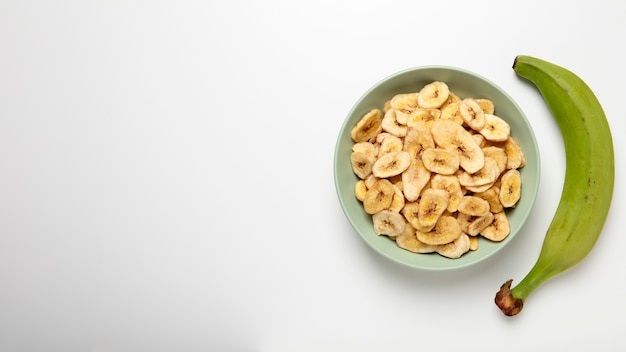Ketones are often mentioned in discussions about ketogenic diets and weight loss, but they’re also a key part of our body’s metabolism. Knowing how they work and how they affect our body can give us better insights into our health, especially when it comes to diet and exercise.
What Are Ketones?
Ketones are byproducts created when our body breaks down fat for energy, typically when insulin levels are low. This happens during fasting or when we stick to a low-carb diet. Ketones become an essential energy source for our muscles and brain when carbs, the usual energy source, are in short supply.
The Process of Ketosis
Ketosis is a metabolic state where the body starts burning fat for fuel instead of carbs. It usually takes about 15-30 days of cutting back on carbs to reach ketosis, though this can vary based on genetics. When you’re in ketosis, you might need to adjust your workouts since your energy levels are lower, and recovery takes longer. This could mean fewer reps with the same or lighter weights and longer rest between sets.
The Importance of Diet in Ketosis
Once in ketosis, it’s crucial to stick to your diet. Going without food for more than three hours can cause your body to break down muscle for protein, which isn’t ideal. Consuming about 50 grams of carbs around your workouts can help. These carbs convert to ATP, aiding muscle glycogen synthesis, enhancing workouts, preserving muscle mass, and promoting fat loss.
Every 4-6 days, increase your carb intake by 200-300 grams spread throughout the day. This can boost your mood, keep your thyroid functioning well, and replenish energy.
5-Week Plan to Achieve Ketosis
Week 1: Preparation and Gradual Carb Reduction
– Diet: Reduce carbs to about 50 grams per day. Cut out sugary foods, refined grains, and high-carb fruits.
– Hydration: Drink 2-3 liters of water daily to deplete glycogen.
– Education: Learn about ketosis, ketogenic foods, and how to read nutrition labels.
– Supplements: Consider taking a multivitamin.
– Activity: Keep up moderate-intensity exercises.
Week 2: Entering Ketosis
– Diet: Cut carbs to below 20-30 grams daily. Eat high-fat, moderate-protein foods like avocados, olive oil, nuts, seeds, fatty fish, and leafy greens.
– Hydration: Maintain high water intake and add electrolytes to avoid keto flu.
– Monitoring: Use ketone strips to confirm ketosis.
– Activity: Light to moderate exercise, adjusting as your body adapts.
Week 3: Optimizing Ketosis
– Diet: Adjust fat and protein intake using a macro calculator for proper balance.
– Hydration: Keep up water and electrolyte balance.
– Monitoring: Regularly check ketone levels and tweak your diet as needed.
– Activity: Add more strength training to preserve muscle mass.
Week 4: Deepening Ketosis and Fat Adaptation
– Diet: Ensure sufficient healthy fats as your body adapts to using fat for fuel.
– Hydration: Continue consistent water and electrolyte intake.
– Monitoring: Watch for changes in energy levels and ketone readings.
– Activity: Increase workout intensity and frequency, focusing on endurance and strength training.
Week 5: Sustainability and Adjustment
– Diet: Add a variety of low-carb vegetables and keto-friendly foods for balance.
– Hydration: Maintain water and electrolytes to support ongoing ketosis.
– Monitoring: Adjust your diet based on ketone levels, weight loss goals, and overall well-being.
– Activity: Set up a consistent exercise routine with cardio, strength, and flexibility workouts.
Additional Tips
– Keep a food diary to track progress.
– Listen to your body and adjust based on how you feel.
– Consider consulting a healthcare professional or dietitian experienced in ketogenic diets.
Key Supplements and Nutritional Strategies for Optimal Results
Creatine
Take 6 grams daily, split into two servings before and after workouts. It helps with muscle growth and protection, particularly during weight loss phases.
Vitamin C
Consume 1 gram daily for its antioxidant properties. If high doses cause digestive issues, get Vitamin C from foods like oranges, strawberries, kiwi, bell peppers, kale, spinach, and broccoli.
Multivitamin-Mineral Supplement
A daily multi can fill nutritional gaps, but it’s best to get nutrients from a balanced diet with fruits, vegetables, whole grains, lean proteins, and healthy fats.
Omega 3 Fatty Acids
Take 6-10 grams daily, spread over your main meals. Omega 3s support joint and muscle health, reduce inflammation, aid recovery, and boost metabolism. Foods like fatty fish (salmon, mackerel), flaxseeds, chia seeds, and walnuts are good natural sources.
Understanding ketones and ketosis can be a powerful way to manage your health and fitness goals. Always check with a healthcare provider before making big changes to your diet or exercise routine.







